Hmx1 regulates urfh1 expression in the craniofacial region in zebrafish
- PMID: 33465110
- PMCID: PMC7815118
- DOI: 10.1371/journal.pone.0245239
Hmx1 regulates urfh1 expression in the craniofacial region in zebrafish
Abstract
H6 family homeobox 1 (HMX1) regulates multiple aspects of craniofacial development as it is widely expressed in the eye, peripheral ganglia and branchial arches. Mutations in HMX1 are linked to an ocular defect termed Oculo-auricular syndrome of Schorderet-Munier-Franceschetti (MIM #612109). We identified UHRF1 as a target of HMX1 during development. UHRF1 and its partner proteins actively regulate chromatin modifications and cellular proliferation. Luciferase assays and in situ hybridization analyses showed that HMX1 exerts a transcriptional inhibitory effect on UHRF1 and a modification of its expression pattern. Overexpression of hmx1 in hsp70-hmx1 zebrafish increased uhrf1 expression in the cranial region, while mutations in the hmx1 dimerization domains reduced uhrf1 expression. Moreover, the expression level of uhrf1 and its partner dnmt1 was increased in the eye field in response to hmx1 overexpression. These results indicate that hmx1 regulates uhrf1 expression and, potentially through regulating the expression of factors involved in DNA methylation, contribute to the development of the craniofacial region of zebrafish.
Conflict of interest statement
The authors have declared that no competing interests exist.
Figures
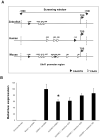
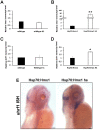
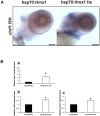
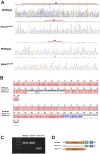
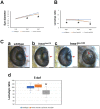

Similar articles
-
Premature Vertebral Mineralization in hmx1-Mutant Zebrafish.Cells. 2022 Mar 24;11(7):1088. doi: 10.3390/cells11071088. Cells. 2022. PMID: 35406651 Free PMC article.
-
A dimerized HMX1 inhibits EPHA6/epha4b in mouse and zebrafish retinas.PLoS One. 2014 Jun 19;9(6):e100096. doi: 10.1371/journal.pone.0100096. eCollection 2014. PLoS One. 2014. PMID: 24945320 Free PMC article.
-
Zebrafish hmx1 promotes retinogenesis.Exp Eye Res. 2012 Dec;105:34-42. doi: 10.1016/j.exer.2012.10.002. Epub 2012 Oct 12. Exp Eye Res. 2012. PMID: 23068565
-
Deletion of a conserved regulatory element required for Hmx1 expression in craniofacial mesenchyme in the dumbo rat: a newly identified cause of congenital ear malformation.Dis Model Mech. 2012 Nov;5(6):812-22. doi: 10.1242/dmm.009910. Epub 2012 Jun 26. Dis Model Mech. 2012. PMID: 22736458 Free PMC article.
-
Mouse H6 Homeobox 1 (Hmx1) mutations cause cranial abnormalities and reduced body mass.BMC Dev Biol. 2009 Apr 20;9:27. doi: 10.1186/1471-213X-9-27. BMC Dev Biol. 2009. PMID: 19379485 Free PMC article.
Cited by
-
Significance of Premature Vertebral Mineralization in Zebrafish Models in Mechanistic and Pharmaceutical Research on Hereditary Multisystem Diseases.Biomolecules. 2023 Nov 6;13(11):1621. doi: 10.3390/biom13111621. Biomolecules. 2023. PMID: 38002303 Free PMC article. Review.
-
Natural and Synthetic Anticancer Epidrugs Targeting the Epigenetic Integrator UHRF1.Molecules. 2023 Aug 10;28(16):5997. doi: 10.3390/molecules28165997. Molecules. 2023. PMID: 37630248 Free PMC article. Review.
-
Premature Vertebral Mineralization in hmx1-Mutant Zebrafish.Cells. 2022 Mar 24;11(7):1088. doi: 10.3390/cells11071088. Cells. 2022. PMID: 35406651 Free PMC article.
References
Publication types
MeSH terms
Substances
LinkOut - more resources
Full Text Sources
Other Literature Sources
Medical
Molecular Biology Databases
Research Materials

